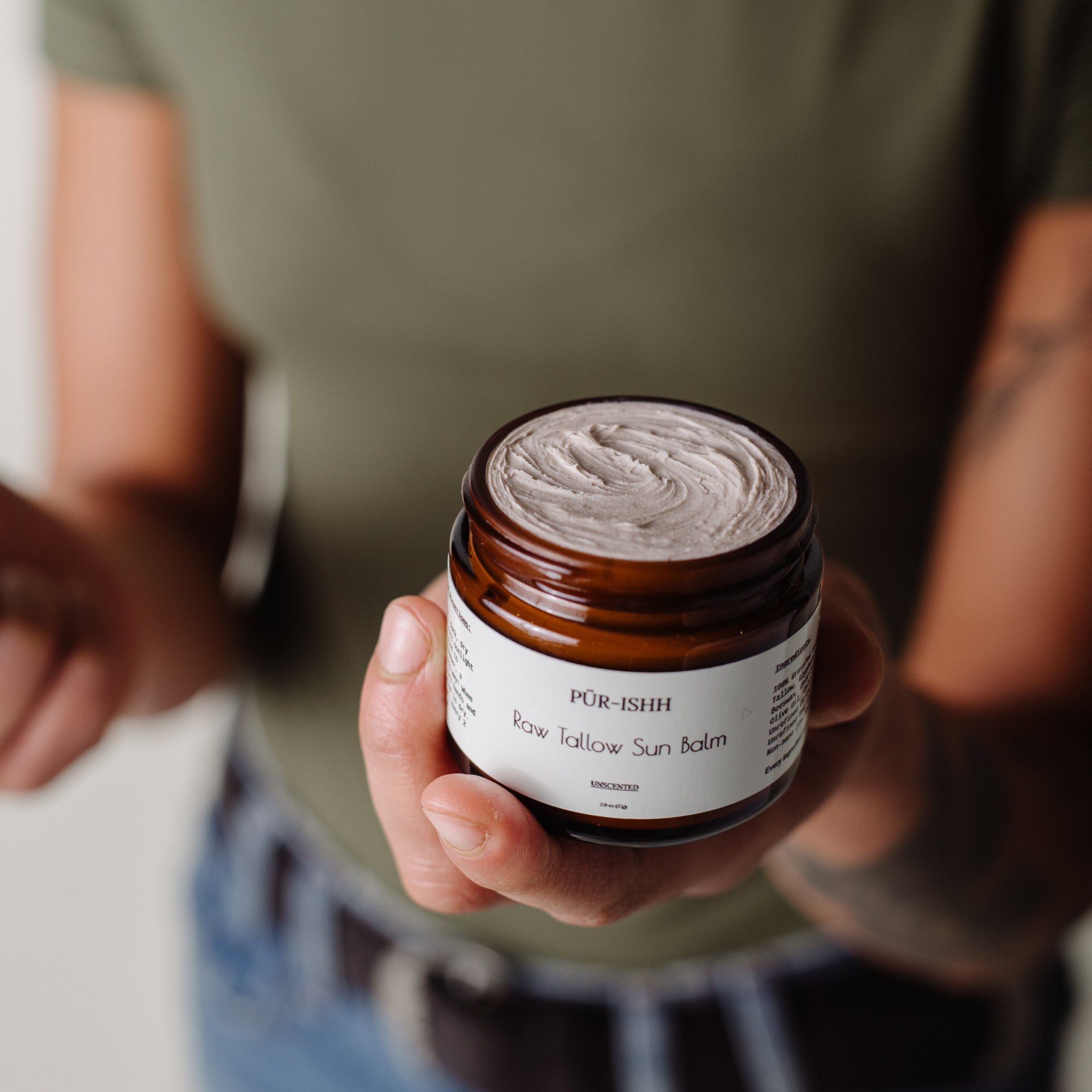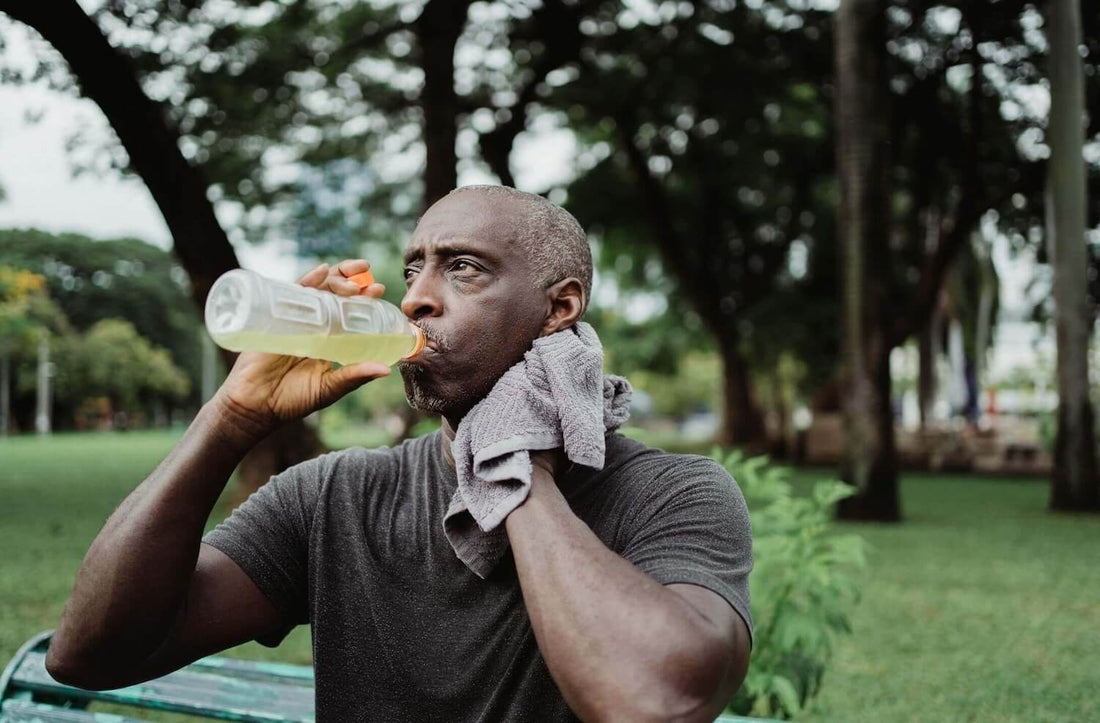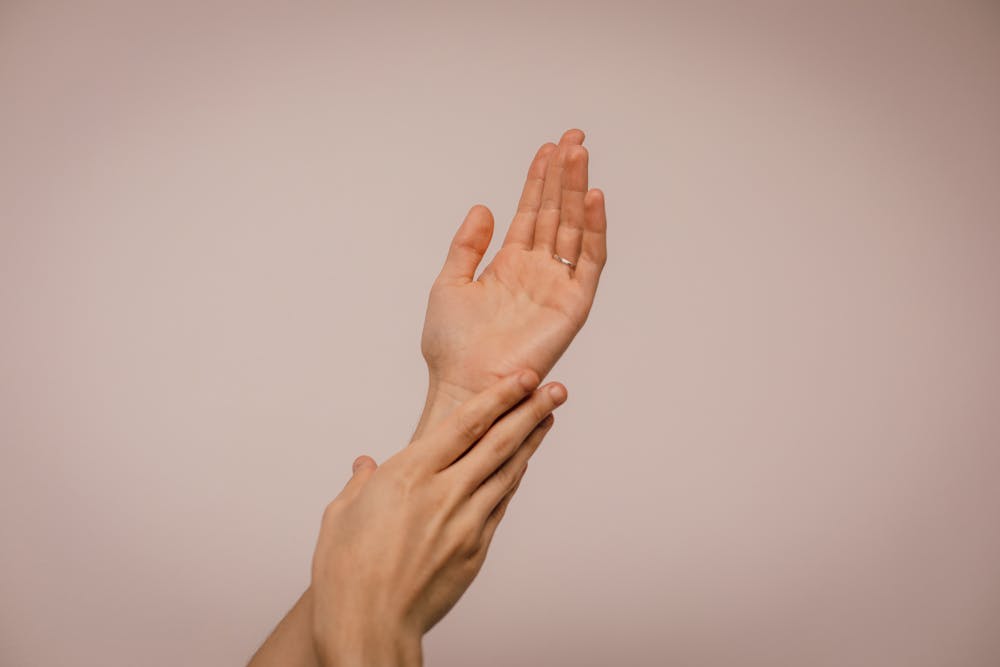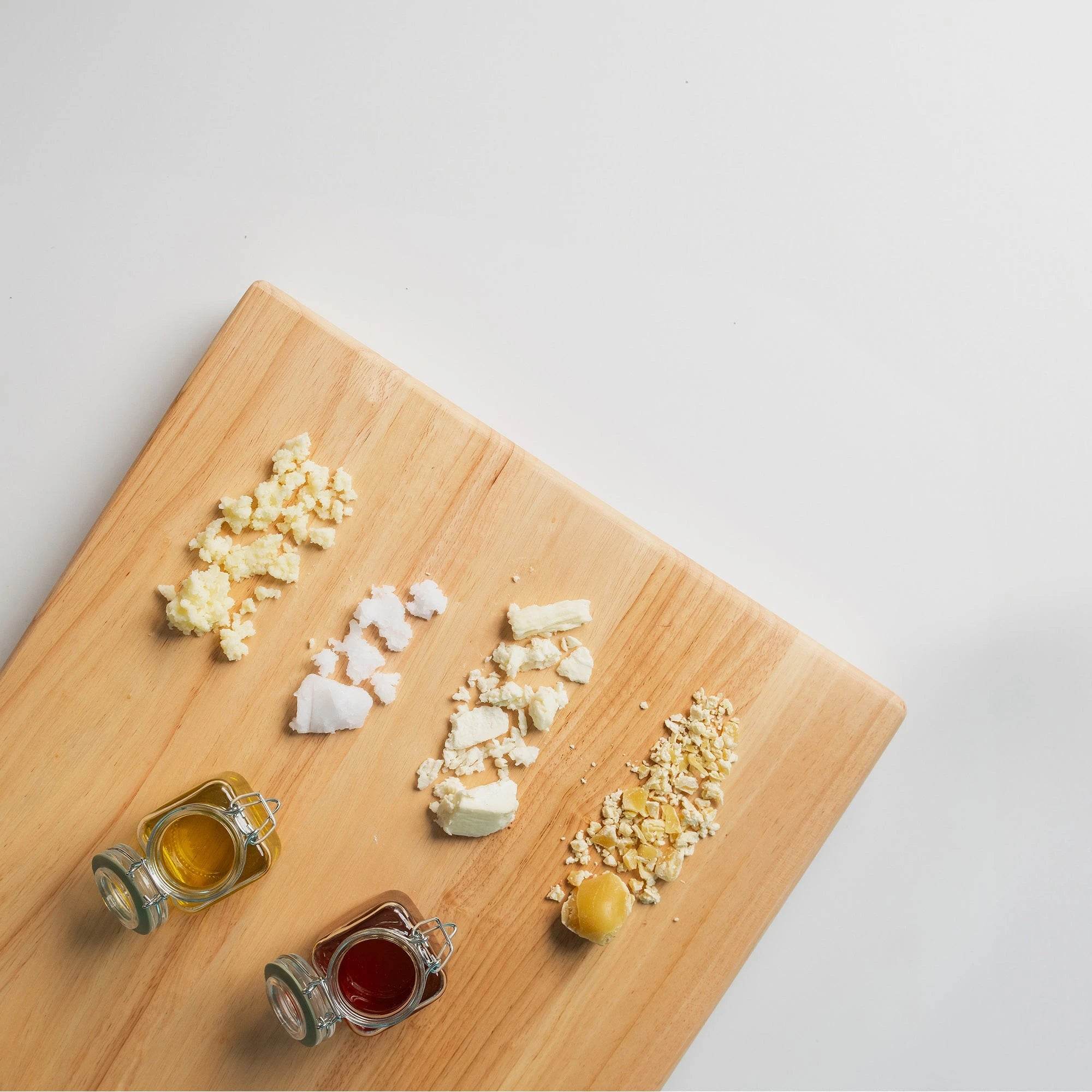You've probably never considered slathering beef fat on your face, but before you dismiss the idea, consider this: your great-grandmother likely had better skin than most people today, and she didn't have access to the hundreds of skincare products lining modern store shelves. What she did have was tallow – rendered animal fat that has been used for centuries to nourish and protect skin.
In our quest for perfect skin, we've moved further and further away from simple, natural ingredients that actually work. Instead, we're bombarding our skin with synthetic chemicals, preservatives, and compounds our bodies don't recognize. It's time to take a step back and understand why tallow might be the skincare breakthrough you've been searching for.
Understanding What Tallow Actually Is
Tallow is simply rendered fat from grass-fed cattle, processed at low temperatures to create a pure, nutrient-rich skincare ingredient. When you render tallow properly, you're left with a creamy, ivory-colored substance that's packed with vitamins, minerals, and fatty acids that closely match what your skin naturally produces.
The key difference between tallow and other animal fats is the rendering process and the quality of the source. High-quality tallow comes from grass-fed, pasture-raised cattle and is rendered slowly to preserve all the beneficial compounds. This isn't the same as the heavily processed fats you might find in conventional products.
What makes tallow special is its composition. It contains vitamins A, D, E, and K in their most bioavailable forms, along with essential fatty acids that your skin can actually use. These aren't synthetic versions created in a lab – they're the same nutrients your skin has been designed to recognize and utilize for thousands of years.
How Your Skin Actually Works
To understand why tallow is so effective, you need to understand how your skin functions. Your skin barrier is made up of lipids (fats) that keep moisture in and irritants out. When this barrier is compromised, you experience dryness, irritation, and premature aging.
Your skin naturally produces sebum, which is remarkably similar in composition to tallow. Sebum contains saturated fats, monounsaturated fats, and fat-soluble vitamins – the same components found in high-quality tallow. This is why tallow feels so natural on your skin and absorbs so readily without leaving a greasy residue.
Commercial moisturizers often work against your skin's natural processes. They may provide temporary relief, but they don't actually support your skin's ability to maintain its own moisture balance. Many contain ingredients that can disrupt your skin barrier over time, creating a cycle of dependence.
The Problem with Commercial Moisturizers
Walk down any skincare aisle and you'll be overwhelmed by options, each promising miraculous results. But when you start reading ingredient lists, you'll find a cocktail of synthetic compounds, many of which have been linked to skin irritation, hormonal disruption, and long-term health concerns.
Common ingredients in commercial moisturizers include parabens for preservation, sulfates for texture, synthetic fragrances for scent, petroleum-based ingredients that sit on top of skin rather than nourishing it, and emulsifiers that can disrupt your skin barrier. Many of these ingredients are necessary to give products a long shelf life and appealing texture, but they don't necessarily benefit your skin.
The marketing around commercial skincare often focuses on complex scientific-sounding ingredients that promise to revolutionize your skin. But complexity isn't always better. Your skin has been evolving for millions of years to work with simple, natural compounds – not laboratory-created molecules.
Many people find themselves using more and more products to address skin issues, never realizing that the products themselves might be contributing to the problems. This is especially common with people who have sensitive skin or conditions like eczema, where commercial products can actually make symptoms worse.
Why Tallow Works So Well for Skincare
Tallow's effectiveness comes from its remarkable compatibility with human skin. The fatty acid profile of tallow closely matches that of healthy human skin, which means your skin recognizes it as something familiar rather than foreign. This leads to better absorption and fewer reactions.
The vitamins in tallow are fat-soluble, which means they can penetrate deeply into your skin layers where they're needed most. Vitamin A supports skin cell turnover and repair, vitamin D has anti-inflammatory properties, vitamin E provides antioxidant protection against free radical damage, and vitamin K helps with skin healing and reducing inflammation.
Unlike many commercial moisturizers that sit on top of your skin, tallow actually absorbs and becomes part of your skin's natural lipid barrier. This means it provides long-lasting hydration without the need for constant reapplication. Many people find they need to use far less product when they switch to tallow-based skincare.
Tallow also has natural antimicrobial properties, which can help prevent skin infections and reduce acne. This is particularly beneficial for people who struggle with bacterial or fungal skin issues that can be exacerbated by commercial products containing sugars or other ingredients that feed harmful microorganisms.
Comparing Ingredients: Simple vs. Complex
When you compare a high-quality tallow balm to a typical commercial moisturizer, the difference in ingredient lists is striking. A pure tallow balm might contain just grass-fed tallow and perhaps a small amount of natural essential oil for scent. Compare this to commercial moisturizers that often contain 20 or more ingredients, many of which you can't pronounce.
This simplicity is actually a strength, not a weakness. With fewer ingredients, there's less chance of irritation or allergic reactions. You know exactly what you're putting on your skin, and you can trace each ingredient back to its source. This transparency is rare in commercial skincare.
The concentration of active ingredients in tallow is also higher than in most commercial products. Commercial moisturizers are often mostly water, requiring preservatives and emulsifiers to create a stable product. Tallow needs no water, no preservatives, and no artificial ingredients to remain stable and effective.
This doesn't mean that all commercial moisturizers are bad or that tallow is right for everyone, but it does highlight how we've overcomplicated something that can be beautifully simple.
Different Types of Tallow for Different Skin Needs
Not all tallow is created equal, and understanding the differences can help you choose the right product for your skin. Grass-fed tallow from pasture-raised cattle contains higher levels of vitamins and has a better fatty acid profile than tallow from grain-fed animals. The diet of the animal directly affects the quality of the fat.
Some tallow products are whipped with other beneficial ingredients like organic honey for its antimicrobial properties, organic coconut oil for additional moisturizing benefits, or organic jojoba oil which closely mimics your skin's natural sebum. These combinations can enhance tallow's already impressive benefits.
The rendering process also matters. Low-temperature rendering preserves more nutrients, while high-temperature processing can destroy some of the beneficial compounds. Look for tallow that's been rendered using traditional methods that preserve the integrity of the fat.
Some people prefer completely pure tallow with no additional ingredients, especially if they have very sensitive skin or multiple allergies. Others enjoy tallow balms scented with natural essential oils like lavender or rosemary, which can provide additional therapeutic benefits.
Addressing Common Concerns About Using Tallow
The biggest concern is how to use tallow. Most people frown on the idea of putting animal fat on their skin. This is understandable given our modern conditioning to think of skincare as necessarily synthetic and "clean." But remember that humans have been using animal fats for skin care for thousands of years, long before we had access to petroleum-based alternatives.
Another common concern is whether tallow will clog pores or cause breakouts. Because tallow closely matches your skin's natural sebum, it's actually less likely to clog pores than many commercial moisturizers. However, as with any new skincare product, it's wise to patch test first, especially if you have very sensitive skin.
Some people worry about the smell of tallow, expecting it to have a strong, unpleasant odor. High-quality, properly rendered tallow has very little scent – it should smell neutral or even slightly sweet. If tallow has a strong, rancid smell, it hasn't been processed correctly or has gone bad.
The texture is another concern for people used to light, easily absorbed commercial moisturizers. Tallow is richer and takes a moment longer to absorb, but this is because it's actually nourishing your skin rather than just sitting on the surface. A little goes a long way, so you typically need much less than you would of a commercial product.
How to Transition from Commercial to Tallow-Based Skincare
If you're considering making the switch to tallow-based skincare, it's best to transition gradually. Your skin has become accustomed to commercial products, and it may take time to adjust to something completely different. Start by using tallow on a small area to see how your skin responds.
Many people find it helpful to begin by using tallow just at night, allowing their skin to repair and adjust while they sleep. You can continue using your regular daytime moisturizer while your skin adapts. Once you're comfortable with how tallow feels and performs, you can gradually expand its use.
Don't be surprised if your skin goes through an adjustment period. Some people experience temporary changes as their skin rebalances and starts producing its natural oils more efficiently. This is normal and usually resolves within a few weeks.
Keep your expectations realistic. Tallow isn't a miracle cure, and it won't transform your skin overnight. What it will do is provide consistent, gentle nourishment that supports your skin's natural functions over time. Many people notice improvements in skin texture, reduced irritation, and better overall skin health after several weeks of consistent use.
The Environmental and Ethical Considerations
Beyond its benefits for your skin, tallow also represents a more sustainable approach to skincare. When you use tallow from grass-fed cattle, you're supporting regenerative agriculture practices that can actually improve soil health and sequester carbon. This is in stark contrast to the industrial agriculture often required to produce synthetic skincare ingredients.
Using tallow also represents a nose-to-tail approach to animal products, making use of parts that might otherwise be wasted. If you're already consuming grass-fed meat, using tallow for skincare is a way to honor the whole animal and reduce waste.
The packaging for tallow products is typically much simpler and more sustainable than commercial skincare. Glass jars and metal tins can be reused or recycled easily, and there's no need for the complex packaging required to preserve synthetic products.
From an ethical standpoint, choosing tallow means supporting small farms and artisanal producers rather than large cosmetic corporations. Many tallow-based skincare companies are small, family-owned businesses committed to quality and sustainability.
Making Your Own Tallow Skincare
For those who want complete control over their skincare, making your own tallow balm is surprisingly simple. You'll need high-quality suet (the hard fat around cattle kidneys) from a trusted source, preferably grass-fed and organic. The rendering process involves slowly heating the fat until it melts and straining out any impurities.
Once you have pure tallow, you can use it as-is or whip it with a small amount of other beneficial oils. Some people add a few drops of essential oils for scent, but this isn't necessary. The key is to keep it simple and use only ingredients you recognize and trust.
Making your own tallow ensures you know exactly what's in your skincare and allows you to customize it for your specific needs. It's also significantly more economical than buying commercial products, as a little tallow goes a very long way.
However, making your own does require some time and effort, and not everyone is comfortable with the rendering process. Fortunately, there are now many high-quality, artisanal tallow skincare products available from reputable producers.
What to Look for When Buying Tallow Skincare
If you decide to purchase tallow skincare rather than make your own, there are several important factors to consider. First and most importantly, look for products made from grass-fed, pasture-raised cattle. The quality of the animal's diet directly affects the quality of the tallow.
The rendering process should be low-temperature to preserve nutrients, and the tallow should be filtered to remove impurities while maintaining its beneficial properties. Avoid products that contain a long list of additional ingredients, especially synthetic preservatives or fragrances.
Look for companies that are transparent about their sourcing and production methods. Reputable producers will be happy to share information about where their tallow comes from and how it's processed. They should also be able to provide information about testing for purity and safety.
Consider the packaging as well. Tallow should be stored in glass or food-grade containers that protect it from light and air, which can cause it to become rancid over time. Avoid products in clear containers that have been sitting in bright retail environments for extended periods.
The Future of Natural Skincare
The growing interest in tallow and other traditional skincare ingredients represents a broader movement toward simplicity and sustainability in personal care. More people are questioning whether complex, synthetic formulations are really necessary or beneficial for healthy skin.
This doesn't mean we need to completely abandon modern skincare science, but rather that we can be more selective about which innovations truly serve our skin's health versus which ones serve marketing purposes. The future of skincare may well be a combination of ancient wisdom and modern understanding.
As more people experience the benefits of tallow-based skincare, we're likely to see continued growth in artisanal, small-batch products that prioritize quality over convenience. This shift benefits not only individual skin health but also supports more sustainable and ethical approaches to personal care.
The beauty industry is slowly recognizing that consumers want transparency, simplicity, and effectiveness over flashy marketing and complex formulations. Tallow represents all of these values in one simple, powerful ingredient.
Your Skin Deserves Better
Your skin is your largest organ, and everything you put on it is absorbed into your body to some degree. When you choose tallow over commercial moisturizers, you're choosing to nourish your skin with ingredients it recognizes and can actually use, rather than synthetic compounds that may cause more harm than good over time.
The transition to tallow-based skincare isn't just about better skin – it's about taking control of what you put on your body and supporting practices that are better for your health and the environment. It's about rediscovering that sometimes the old ways really are the best ways.
Your ancestors didn't have access to the vast array of skincare products we have today, yet they maintained healthy skin using simple, natural ingredients like tallow. There's wisdom in this simplicity, and your skin will thank you for returning to what actually works.
Whether you choose to make your own tallow skincare or purchase from a trusted producer, you're making a choice that honors both your body and the broader ecosystem. In a world of increasingly complex and synthetic personal care products, tallow offers a return to simplicity, effectiveness, and authenticity.




